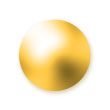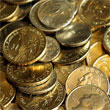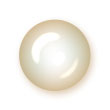...the difference between Fluorescent and Glow-in-the-Dark paint? Between Pearlescent and Iridescent?
Every Halloween and summer "Rave season", lots of folks are getting ready to order supplies for their homemade costumes and props. We particularly get a lot of calls about Glow-in-the-Dark and Fluorescent products. Our various fabric paints and dyes are often a very important component of costumes, decorations and stage props. So we thought we would clear up some of the confusion that comes up, especially the difference between the terms fluorescent and glow-in-the-dark (correctly referred to as phosphorescent). On this subject, we are very excited about our newest arrival on March 1st, 2025 of a true Fiber Reactive Fluorescent Yellow Dye - #420 - Psychedelic Sunshine!
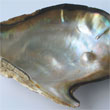
For this discussion, keep in mind that paint is a colorless medium that has finely ground pigment that is suspended in it which gives it the color and visual characteristics. (Unlike dye, pigment has no way of sticking to something by itself.) Fabric paint like we carry here at Dharma is special, because the pigments are suspended in a so called Fabric Medium, which is acrylic based, normally, but has additives to make it softer on fabric than other more plastic feeling paints. Also, whether heat set, fixative set, or merely cured, paint for fabric must be washable! Fabric medium makes fabric paint washable when heat set or cured properly according to directions for a particular brand.
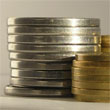
The thickness or thinness of the medium, and the transparency or opacity of the pigments, more closely define how best the paint can be used, i.e. which techniques each paint lends itself to. If you are painting on fabric, you use these qualities to decide what type of paint you need for your project based on the technique you are doing, i.e., marbling - thin, screen printing - thick, rubber stamping - thin, block printing - thick, stenciling - thick, hand painting - medium, airbrushing - thin, etc. Transparent paints are best used on white or light colored fabrics, and opaque paints are best used on dark or black fabrics.
Fluorescent Dyes (as opposed to paints) are used, for the appropriate fabrics, when you want the fabric to retain total softness, ie. not be at all stiff or plasticy.
What kind of pigment goes into the medium of a paint gives each type of paint certain visual characteristics. This is where all the more confusing descriptions come in, like fluorescent, phosphorescent, metallic, pearlescent, iridescent, hi-light or interference. That is what we are going to define next, so that you can refine your choice of color and get what you need.
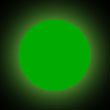
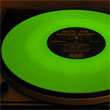
Phosphorescent - really truly glows in the dark! For trick-or-treating and Halloween props, Phosphorescent paint is the spookiest with its otherworldly glow, and also helps you see your little tykes and identify them from the other ones when they are racing ahead of you to the next house of treats. It is made from phosphors such as silver-activated zinc sulfide or, more recently strontium aluminate, and typically glows a pale green to greenish blue color. The mechanism for producing light is similar to that of fluorescent paint, but the emission of visible light persists for some time after it has been exposed to light. It is sort of "charged" by the light. Phosphorescent paints have a sustained glow, which lasts for some minutes or hours after exposure to light, but will eventually fade over time. This kind of paint used to look fairly colorless or very pale in the daylight. Our newer Glow Paint Tubes and Speedball's Night Glo silkscreen colors have pigment added that you can see in the daylight to make them more interesting, then when the lights go out, they glow from the phosphor pigments. So far, there is no such thing as a Phosphorescent dye.
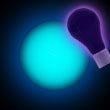
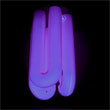

Fluorescent - Does not glow in the dark, but DOES glow very intensely under black lights. Fluorescent paints and dyes react to long-wave ultraviolet (UV) radiation, commonly known as black light. Through the mechanism of fluorescence, UV-sensitive pigments present in the paint or dye absorb the ultraviolet black light (invisible to the human eye) and give off visible light in return. Fluorescent paints and dyes appear a bright neon color under normal daylight or other visible light, and glow brilliantly under black light.
This type of paint or dye has extensive applications in the entertainment industry, both for costuming and stage, and can be used to create black light effects such as invisible images, dual images, day/night transitions, and 3-D effects. You will see it used extensively in rides in amusement parks. A nice Tie-dye design with some Psychedelic Sunshine included will look amazing in regular light, then totally different as it lights up under blacklight. Having unique glowing clothing at a Rave will make you the center of attention!
Several of the brands of paint and markers that we carry have fluorescent colors as well as regular colors to choose from. If it says fluorescent, it will glow under black light. There are Fluorescent choices in Jacquard Airbrush Ink (the most choices), Versatex Printing Ink, Setacolor Transparent, and Jacquard Textile Colors, among others. Any of our Glow-in-the Dark paints will also brightly fluoresce under black light. We also have 4 colors of Jacquard Acid Dye and 5 colors of Dharma Acid Dye for silk and wool that are fluorescent, and are used to dye silks that are being used in dramatic black lit stage productions. Those colors are #608, 620, 627 & 628 (2 pinks and 2 greens) in Jacquard, and #406 Fluorescent Fuchsia, #445 Fluorescent Lemon, #456 Fluorescent Safety Orange, #478 Purple Pop & #479 Radioactive in the Dharma Acid Dyes. Then of course, our newest Fiber Reactive #420 - Psychedelic Sunshine!
Pearlescent / Metallic - has shiny particles in the paint that make it lustrous like a pearl (also called nacreous) or shiny like a precious metal, as well as more finely ground pigments that give it color. Light reflects from all these tiny particles that have a smooth reflective surface, which not only makes the paint luster, but gives it dimension depending on the angle of viewing. This effect cannot be achieved with dyes unfortunately. Generally, these beautiful paints are called metallic when they imitate metals like gold, silver, etc., and they are often called Pearlescent or Pearl, when they are other colors like white, blue, red, etc. Sometimes the pearlescent paints have courser shiny particles and the metallics have finer shiny particles to make them resemble metal further. We have some absolutely beautiful metallic/pearlescent paints (Lumiere, Setacolor, etc.), which have the further advantage of being opaque, so they can be used on any color fabric. We also have Pearl Ex pigments, which can be added to other mediums or paints to make them look pearlescent or metallic.
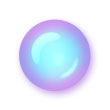

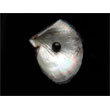
Iridescent/ Halo / Hi-lite / Interference - Iridescence is generally known as the property of certain surfaces which appear to change color as the angle of view changes, sometimes between two colors, and sometimes a whole rainbow. Iridescence may be seen commonly in soap bubbles, feathers and butterfly wings. In paints it is caused by similar shiny smooth particles as pearlescent effects, only the particles have more than one reflective surface, and so the color of the paint changes depending on the angle of viewing. This is very popular in custom car paint jobs. Currently, the only paints we carry for fabric that truly meets this criterion are the Lumiere Halo or Hi-lite colors, also the pure Pearl Ex pigments in the Interference and Duo colors which can be added to any paint medium. This effect also does not exist in dyes, only paints and pigments.









